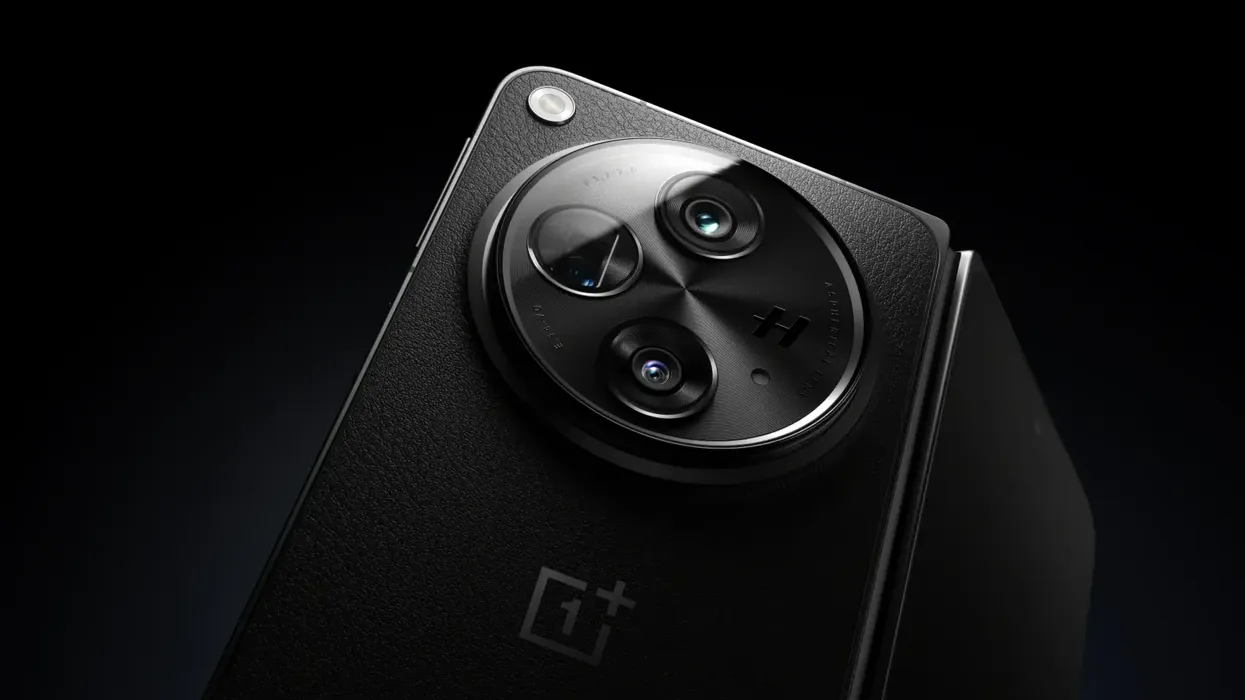Can You Actually Shoot Video With the OnePlus Open Foldable Smartphone?
A look at OnePlus’ first foldable phone to explore how its camera and video recording features stack up to other smartphones.

A review of the OnePlus Open for video.
When one thinks of technological innovation, one usually imagines that the latest advancements are the solutions to various problems and issues that audiences are in dire need of. If that’s the case with OnePlus’ first foldable smartphone, then I must be really out of touch because I don’t know a single person who’s ever said, “Man, I wish I could fold my iPhone in half.”
Yet, here we are. Foldable smartphones are back and, this new one by OnePlus is turning heads not just for its foldable gimmick, but also for its lightweight design and surprisingly capable camera design (which features three cameras all capable of 4K video).
Let’s take a look at the foldable OnePlus Open and explore how its camera and video recording specs and features stack up to other smartphones, and if it might be of interest to you for any of your smartphone videography needs.
Introducing the OnePlus Open
Just announced, OnePlus’ foldable smartphone is the OnePlus Open and is set to launch here on Oct. 26 in the United States. It’s set to retail at a starting price point of $1,699 and will be the brand’s first foldable device.
As a tablet-style foldable design, the OnePlus Open measures in at 0.46 inches when folded closed, yet still with a 7.82-inch, 120 Hz, 2440×2268 OLED display on the inside and a 6.31-inch, 120 Hz, 2484×1116 OLED on the front. The OnePlus also comes in with a quite impressive 239 g weight, which is less than many recent iPhone Pro Max models, as well as making it lighter than other foldables like the Pixel Fold and the Galaxy Fold.
The main screen features 2,800 nits peak brightness and a 120Hz refresh rate while the internal build includes 16GBs of RAM and 512GBs of storage in the base model priced above.
However, for the purposes of video, everything is really going to hinge on the camera and sensor.
The OnePlus Open Camera
The OnePlus Open features a 48-megapixel main camera (24mm equivalent) with an image sensor actually designed by Sony (the LYT-T808 to be exact). As a “Pixel Stacked” sensor, the camera should see improved image quality and a wider dynamic range with better colors than a sensor that arranges photodiodes and pixel transistors together.
There’s also a 64-megapixel telephoto camera that uses an OmniVision OV64B sensor with 0.7µm pixels as well as a 70mm equivalent periscope lens with a f/2.6 aperture, giving the camera 3x optical zoom and 6x hybrid zoom which serves as a defacto crop factor.
For the 48-megapixel ultra-wide camera (which is a 14mm equivalent) with an f/2.2 aperture and an 11-degree field of view, users can expect to use this option as a macro lens for close-ups of items within about three centimeters.
Due to the device’s foldable design, the rear cameras will actually be more usable for selfie or front-style shooting, so there’s actually a 32-megapixel front camera on the cover screen as well.
The OnePlus Open Video Features
Now, moving on to the video capabilities of the OnePlus Open.
The big numbers off the top are that even with a foldable design, the OnePlus Open packs a punch as all three rear cameras can shoot 4K up to 60 fps. This isn’t the highest quality 4K you’ve ever seen, but from specs alone, it’s quite impressive.
Most early reviews of the device and its camera features focus on the photography aspects, which is understandable. However, early results for the video showcase that the cameras are able to avoid excessive noise or color issues with the video processing.
However, at a price point right next to the latest iPhones, the OnePlus Open isn’t likely to turn any long-time Apple heads away from their favorite brand.
In fact, if you’re looking for the best smartphones for video right now, the OnePlus Open probably isn’t going to be your jam just yet.
Still, as we’ve seen with the uber-competitive mirrorless camera market, having more brands in the space is almost always a good thing as it helps to bring more and better cameras out more quickly, as well as encourages manufacturers to work to bring the price points down.
We’ll keep tabs on this new OnePlus Open to see if the company continues to develop with a focus on video now and into the future.













